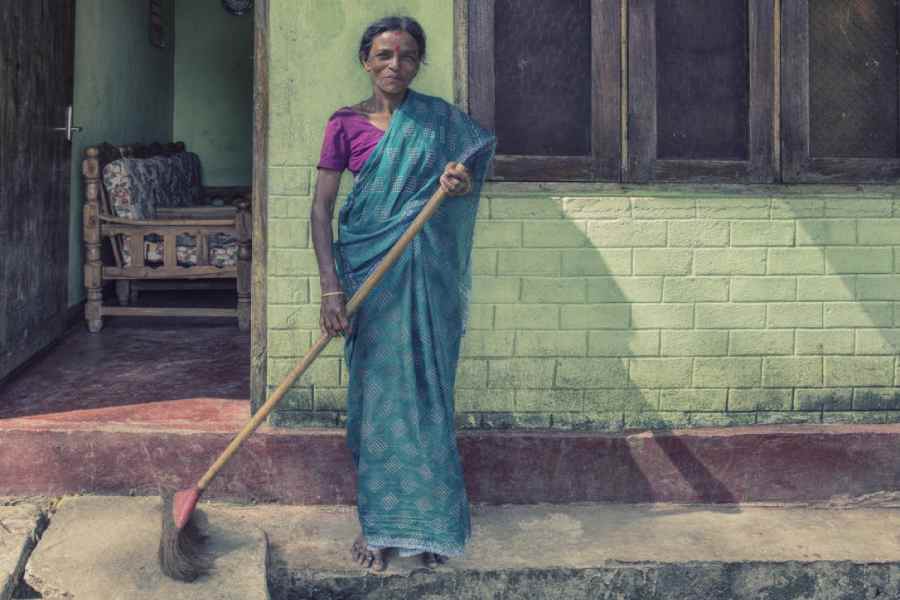A chilling symphony of physical assaults, verbal abuse, and sexual violence behind closed doors echoes from numerous Indian homes. The victims? Women domestic workers, estimated to be at a staggering 4.7 million. It’s the story of countless domestic workers — women and girls like the 13-year-old help locked in a Delhi apartment while her doctor employers vacationed, or a 23-year-old help escaping after alleged rape and abuse. These echoes are also of a young girl being whipped with a dog chain in Delhi, cigarette marks scarring a 12-year-old teen in Nagpur, and of a Hyderabad lawyer allegedly subjecting his teenaged help to unimaginable horrors.
In the murky waters of the informal sector, where regulations are scarce and workers stand defenceless, this narrative unfolds with heart-breaking consistency. They are reminders of the tribulations of millions of domestic workers, predominantly women and often from marginalised groups, who toil silently within the walls of our homes. These are not only horrid tales of abuse but also narratives of stolen dignity, of shattered trust, of a fundamental human right — the right to safety — being callously violated. The abuse documented here is not limited to a handful of incidents; they are the reverberations of a widespread epidemic. Most of the victims are trapped in illiteracy and poverty. This vulnerability becomes weaponised by their tormentors, creating fertile ground for exploitation and abuse.
Millions of women house help work in Indian households. They are not merely ‘helpers’; in reality, they form the invisible engines that power daily life in these establishments. Yet, over 87% of them have been employed without written contracts, 77% face violence, and 85% have no social security, leading to a web of exploitative conditions that is masked by informality. These figures, shocking as they are, merely hint at the individual stories of struggle and resilience hidden within. The official estimate of 4.75 million domestic workers pales in comparison to the actual number; the figure is likely to be somewhere between 4.75 million and 50 million. The official figures, a cruel mockery of reality, thus miss up to 45 million workers. This vast discrepancy, reflecting the informal nature of the work, hinders efforts to monitor violations and enforce legal protections. Shockingly, government initiatives like the e-Shram portal for informal workers have failed to reach the ground — only 1.5% of Delhi’s domestic workers are registered. Even more concerning is the fact that a mere 8% are aware of their basic rights under the Domestic Workers Welfare and Development Act.
In Delhi, 95% of domestic helps earn less than Rs 10,000 per month. Low wages, long working hours, job insecurity, and limited social benefits force them into a vicious cycle. For 50-60% of this constituency, living in their employers’ households means extended work hours, privacy concerns, and heightened vulnerability. Operating within this realm of vulnerabilities, female domestic workers in India are forced to navigate a stark reality defined by migration, limited education, and societal prejudice. According to the Periodic Labour Force Survey, over 80% of these women journey from rural areas seeking economic prospects but land in a disadvantageous terrain. Lacking local networks and support systems, they often struggle to find their footing. Education, too, becomes a stumbling block: only 25% have completed secondary school, while a sizeable chunk remains formally uneducated, limiting their chances of upward mobility and better-paying jobs. This is particularly concerning given that over 60% of these women fall in their prime working years and, yet, find themselves stuck in a low-wage informal sector.
Turning a blind eye to the sufferings of millions inside India’s homes is a morally bankrupt proposition. While legal reforms, stricter enforcement, and swift justice are essential weapons against domestic abuse, the true battlefield lies in societal transformation. Sensitising employers, empowering vulnerable communities through awareness campaigns, and building robust support systems for victims are crucial steps to shatter this cycle of abuse. The government must invest in comprehensive studies to understand the need for formalising domestic work and ensuring that these women receive the legal protections they deserve.
India’s economic progress cannot stand on the broken backs and the bruised spirits of these women. They deserve to be part of the nation’s growth story. It’s time to listen to their voices, acknowledge their vulnerabilities, and join hands to build a society where every individual, regardless of occupation, is treated with dignity and human rights.
Quantifying this tragedy is the first step towards healing. We need accurate data — not whispers — to inform effective policies and resource allocation. But numbers alone won’t mend broken spirits. We need a sledgehammer, not a fly swatter, to shatter the iron fist of indifference. The path to justice is paved with formalisation. Let’s bring domestic work into the light and equip workers with minimum wages, social security, and a voice through dedicated grievance mechanisms. Strengthening the regulatory framework is non-negotiable. Existing laws, like the Domestic Workers Welfare and Social Security, 2010 must be enforced with unyielding vigilance.
This is not a matter of numbers or policies; it’s about human dignity. India’s domestic workers must not remain invisible, not in our homes, not in our laws.
Sachi Satapathy is the director, AF Development Care, New Delhi










